Aaron Smith June 30, 2022 All Feature Vehicles
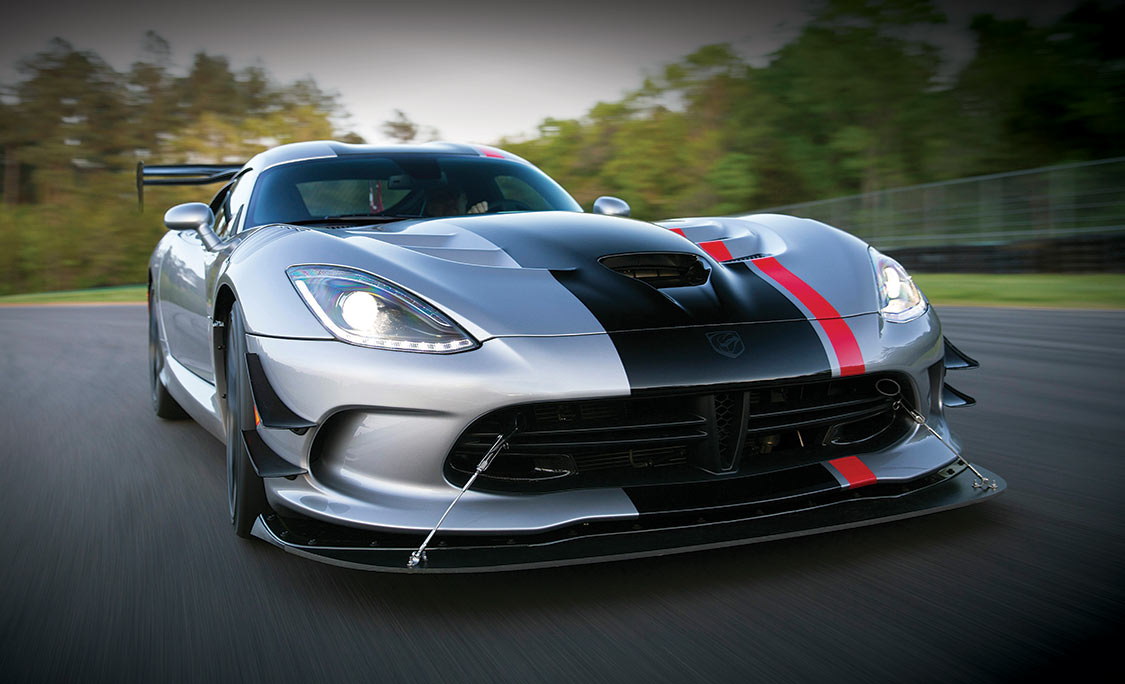
All previous Dodge Viper ACRs have been fast. Not the kind of fast that astounds your friends after you press the “Ludicrous” mode button. No, this is the kind of fast that sets new records at the Nürburgring; the ones that have remained in the Top 10 quickest laps for a street legal production car for more than five years. The kind of fast that gets the attention of elite supercar makers like Lamborghini, Ferrari and Porsche. With that kind of fast to live up to, what does Dodge do to push the envelope? It makes the 2016 edition of the Dodge Viper ACR even faster. This isn’t a street car for the track; it’s a race car you can drive on the street.
If you have any doubts that the ’16 Dodge Viper ACR is serious about performance, just take a look at the 295-width special compound tires wrapped around 19-inch wheels. Walk around back and look at the rear tires. That’s right, the ACR’s front tires are wider than the rear tires on the new BMW M4. To get all 645 horsepower and 600 lb-ft of torque from the massive 8.4 LV-10 engine to the ground, the rear wheels are shod in 355-width tires. Those Kumho Ecsta V720 tires are specifically designed for this Viper ACR and feature a custom tread pattern and compound that’s unique front to rear. Dodge claims the new street legal tires shaved 1.5 seconds per lap during testing when compared to full race compound tires.
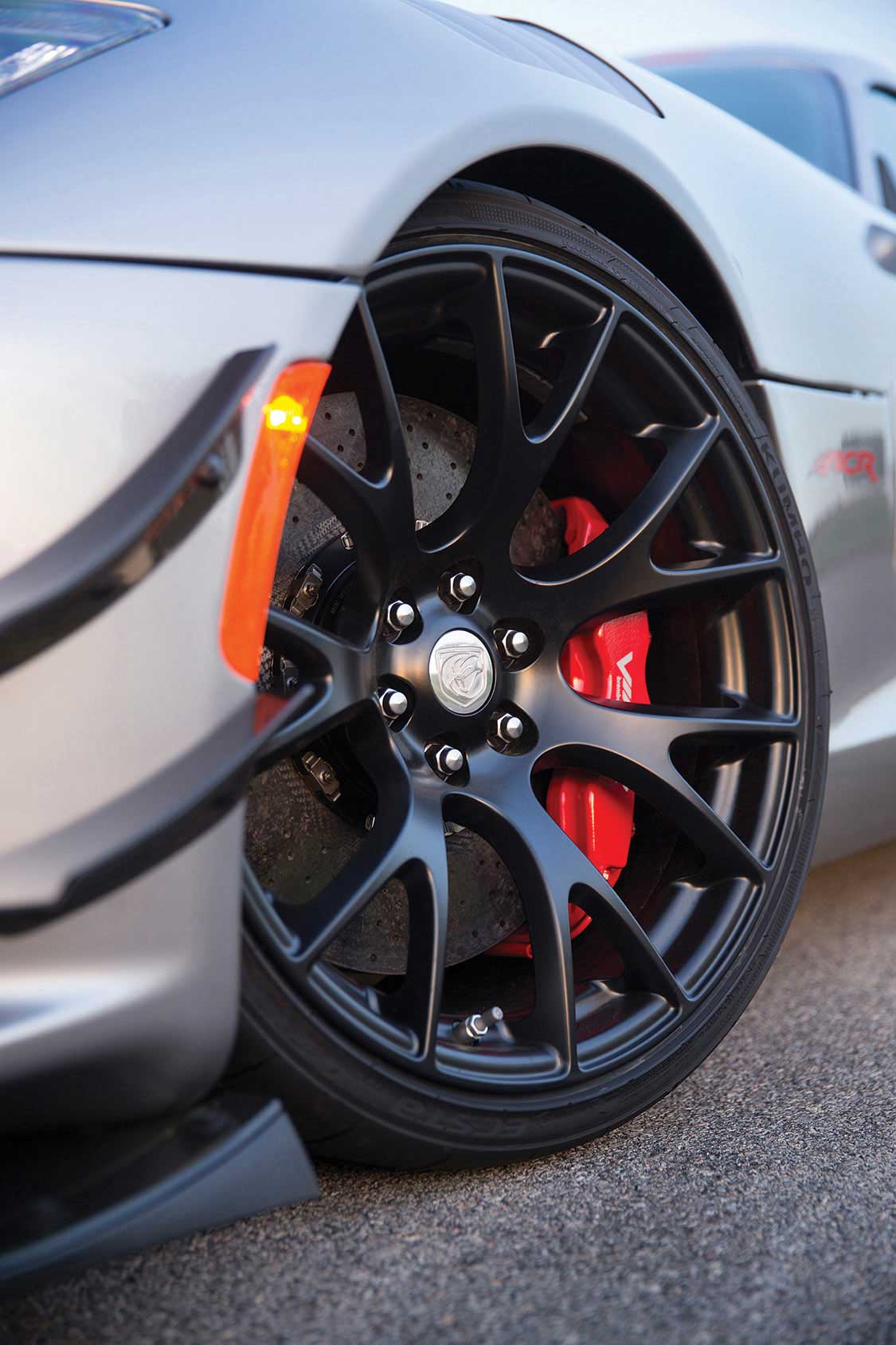
Clearly it seems that with the Dodge Viper ACR more is more. That is until you look at the creature comforts. To reduce weight, the padding is removed from under the carpet, the seats are manually adjustable, and nine of the 12 speakers have been removed. But then again, whoever bought a Viper for creature comforts? However, if you’d like to customize your Viper ACR, Dodge offers the “1 of 1” program which allows you to custom order a combination of seven aero packages, 11 different wheels, three brake packages, four suspension options, 8,000 paint colors or stripes of virtually any color to ensure that your ACR is one-of-a-kind.
The cockpit isn’t a bad place to be. The dash is wrapped in Alcantara, and all of the usual buttons and switches are present. This isn’t a fully stripped race car with a giant kill switch and some aluminum covering the airbag holes. This is a car that could passably be driven on the street, just not during your bumper-to-bumper, suburban-to-urban commute. Pop open the rear hatch though and you’ll find the trunk area stripped of any insulation or carpeting. You can see the access cover for the fuel pump and the ductwork to cool the rear brakes.
The goal with the ACR version was to design the most performance-oriented Viper ever built. The engineers didn’t want this to just be a hopped-up street car for turning a few hot laps at an open track day. They wanted this car to be competitively raced on road courses around the world, so everything is designed for lap after lap of driving at the limit.
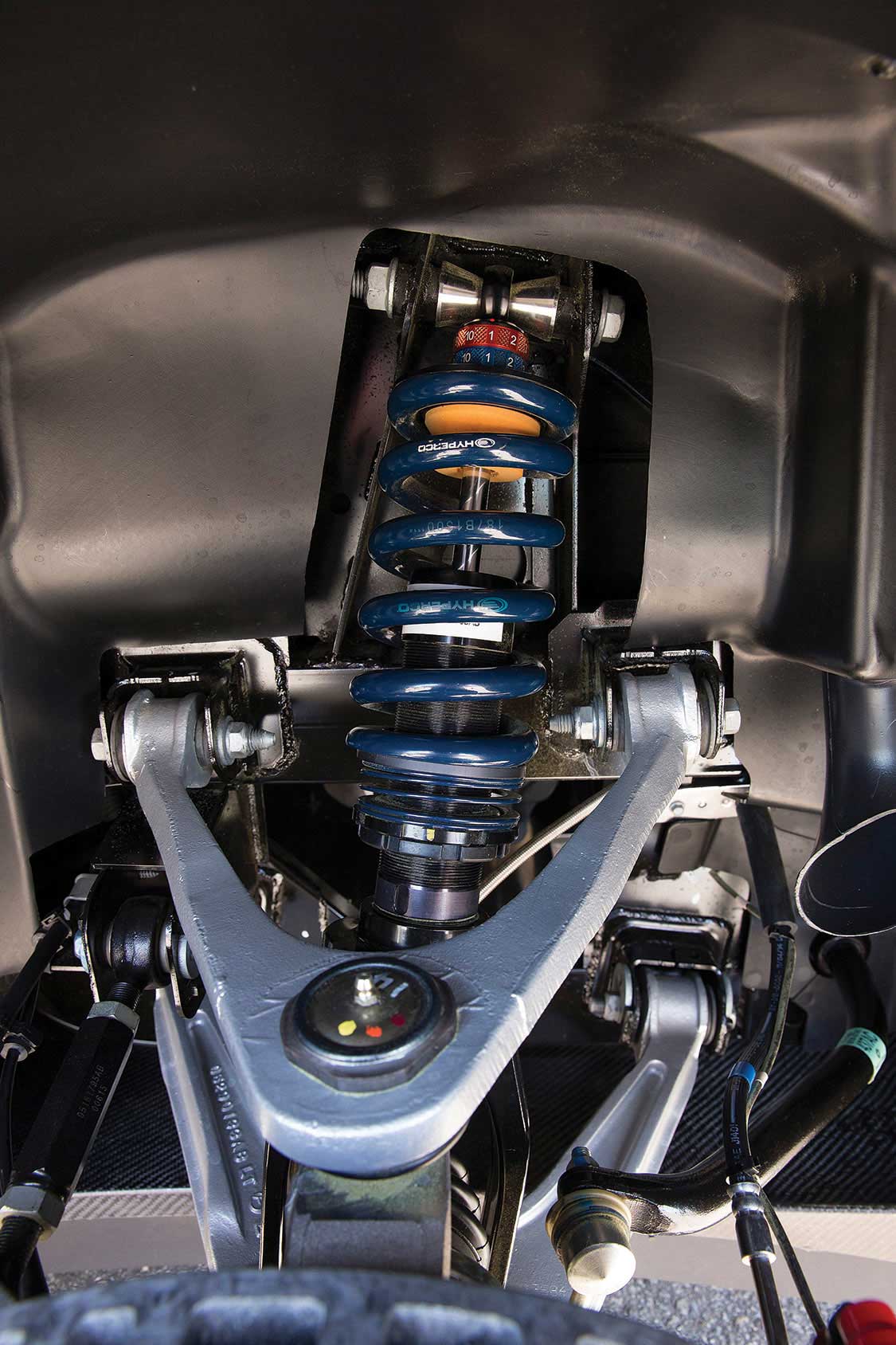
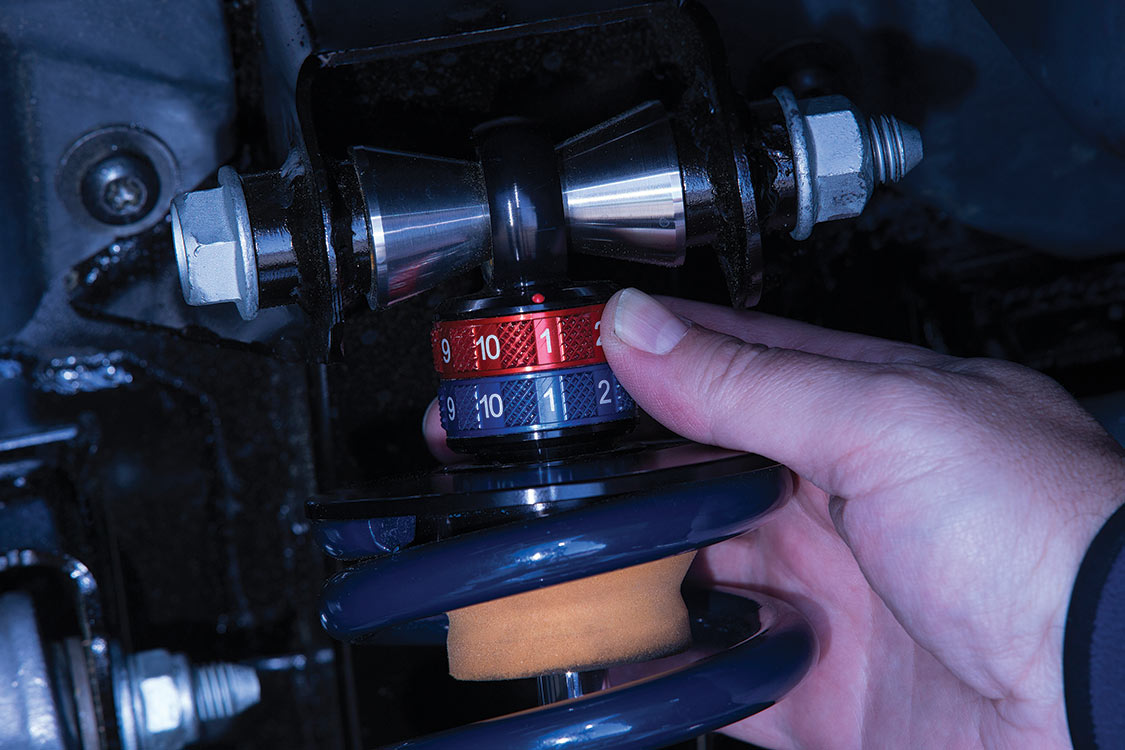
Brakes often take the most punishment at the track, so the ACR features Brembo carbon ceramic matrix brakes that sport 15.4-inch rotors with six-piston calipers up front and 14.2-inch rotors with four-piston calipers in the rear. These monster brakes not only reduce weight, but also allow for repetitive hard braking without a hint of fade. Removable air ducts feed cool air to the rotors to help hasten heat dissipation.
Modern performance cars do a lot of the thinking for the driver and make the average driver look like a hero while often getting in the way of those who know what they’re doing. While the ’16 Dodge Viper ACR features ABS and a five-mode electronic stability program, going fast while staying out of the tire wall is still left up to the driver and requires a high degree of talent. That same driver needs to work three pedals and row a gear lever to get the most out of the engine with the Tremec TR6060 six-speed transmission. No flappy paddle gearbox here.
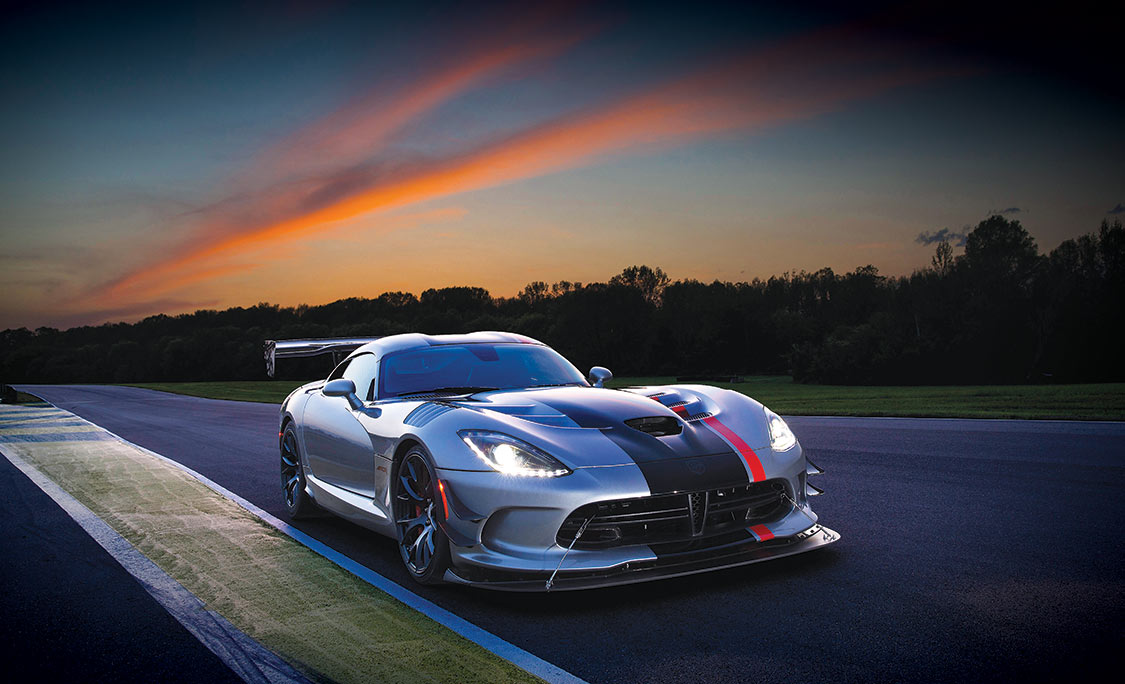
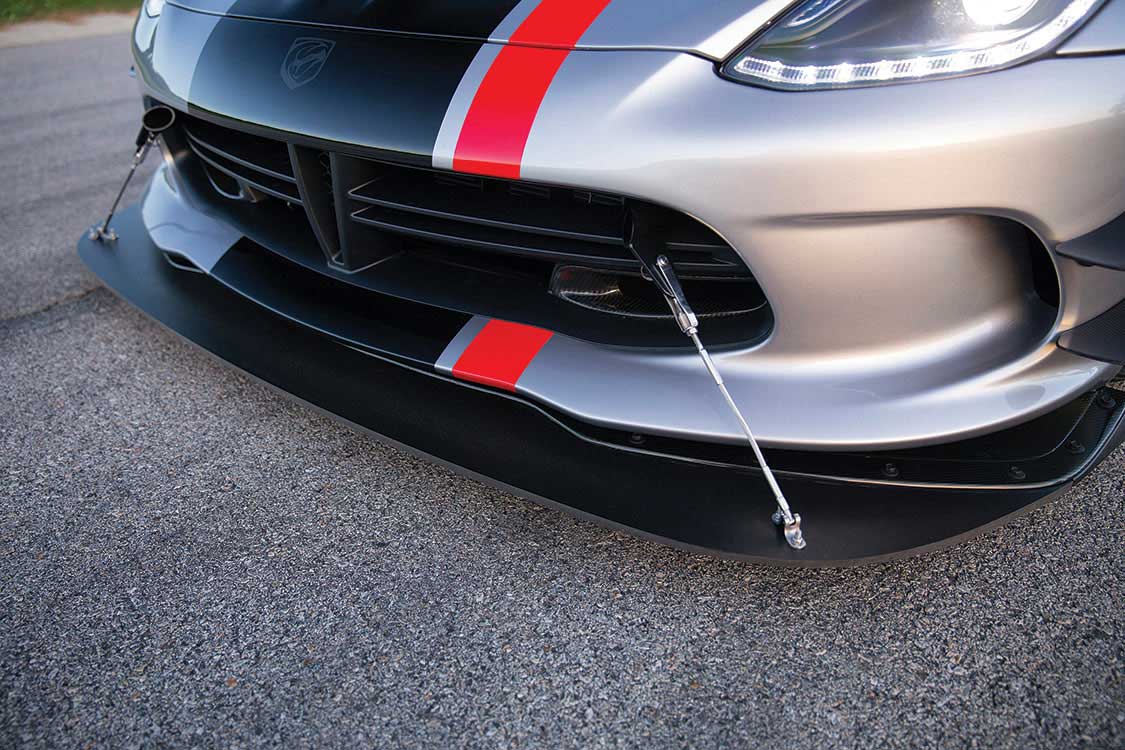
Keeping the massive tires glued to the asphalt is the job of both the suspension and the aerodynamics. Starting with the suspension, the ACR features coil-over Bilstein racing shocks with 10-way adjustability for both compression and rebound. The spring perches feature 3 inches of height adjustment to allow for precise height and corner weight adjustments. Front and rear spring rates are 600 lbs-in and 1,300 lbs-in respectively. That’s more than double the stiffness of the standard Viper TA model.
Looking at the rear wing of the Viper ACR my first thought was that rearward vision would be completely blocked, but in the immortal words of Raúl Juliá in Gumball Rally, “What’s-a behind me is not important!” Fortunately, the Viper ACR’s rear wing sits up so high that you actually look under it, so you’ll be able to enjoy the view of the competition shrinking in the rearview mirror.
The wing isn’t just for appearance. The adjustable carbon-fiber, dual-element wing (referred to as the X-wing by Dodge) along with the adjustable rear carbon fiber diffuser, removable hood louvers, four dive planes and removable front splitter (handy when pulling into steep driveways), produce more than a ton of downforce at 177 mph. Combining the aero package, racing suspension and ACR-specific tires makes for monstrous grip. Dodge claims a sustained 1.5 g in high-speed turns. The Dodge boys also tell us that they have to sell the car with the standard three-point seat belt, but they’ve included all the provisions to easily bolt in a six-point harness. At 1.5 g, you’ll need it.
Press the engine start button and the ACR springs to life with an exhaust note that only a large displacement V-10 can replicate. There’s no need to pipe in fake exhaust sounds via the stereo system here.
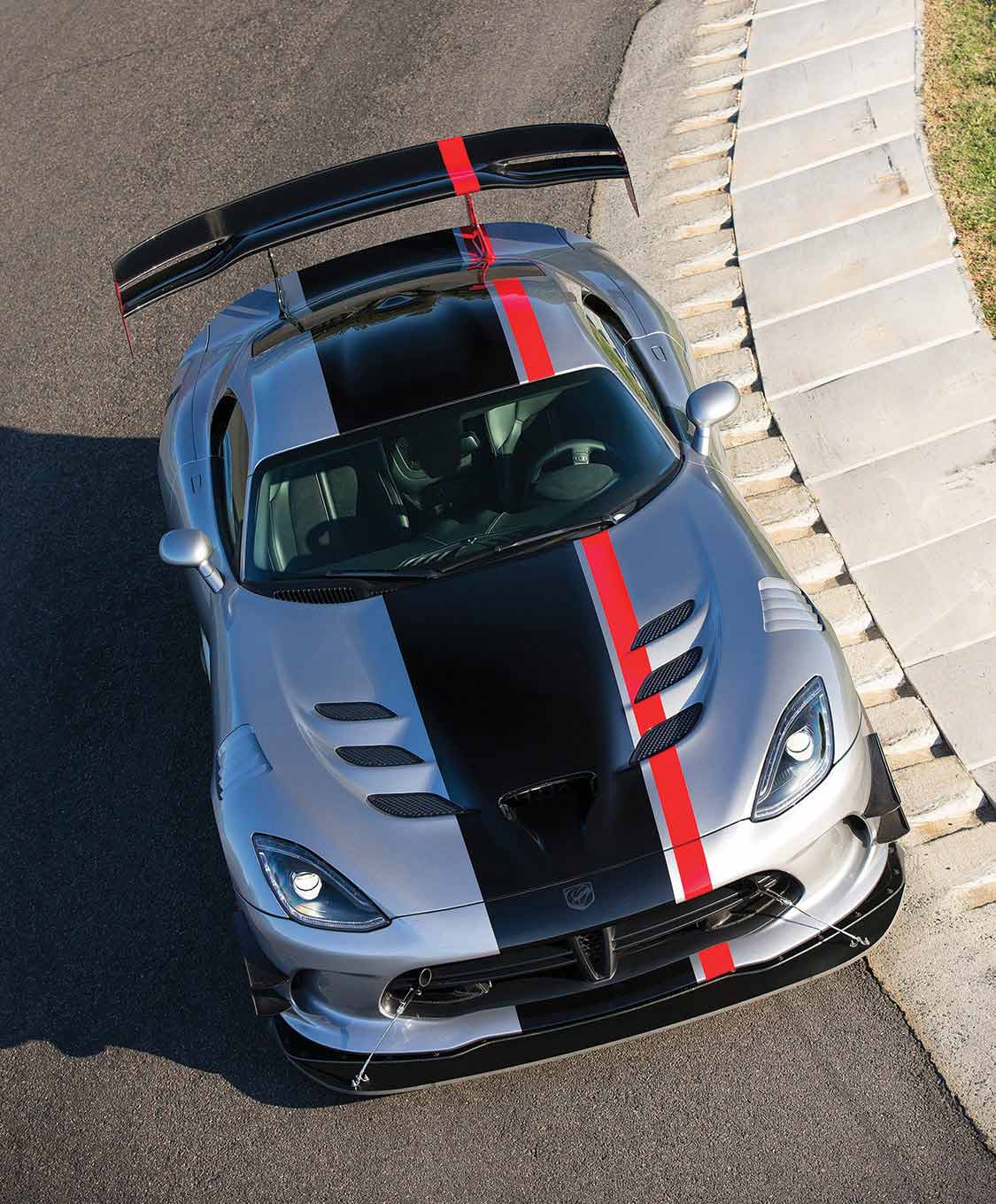
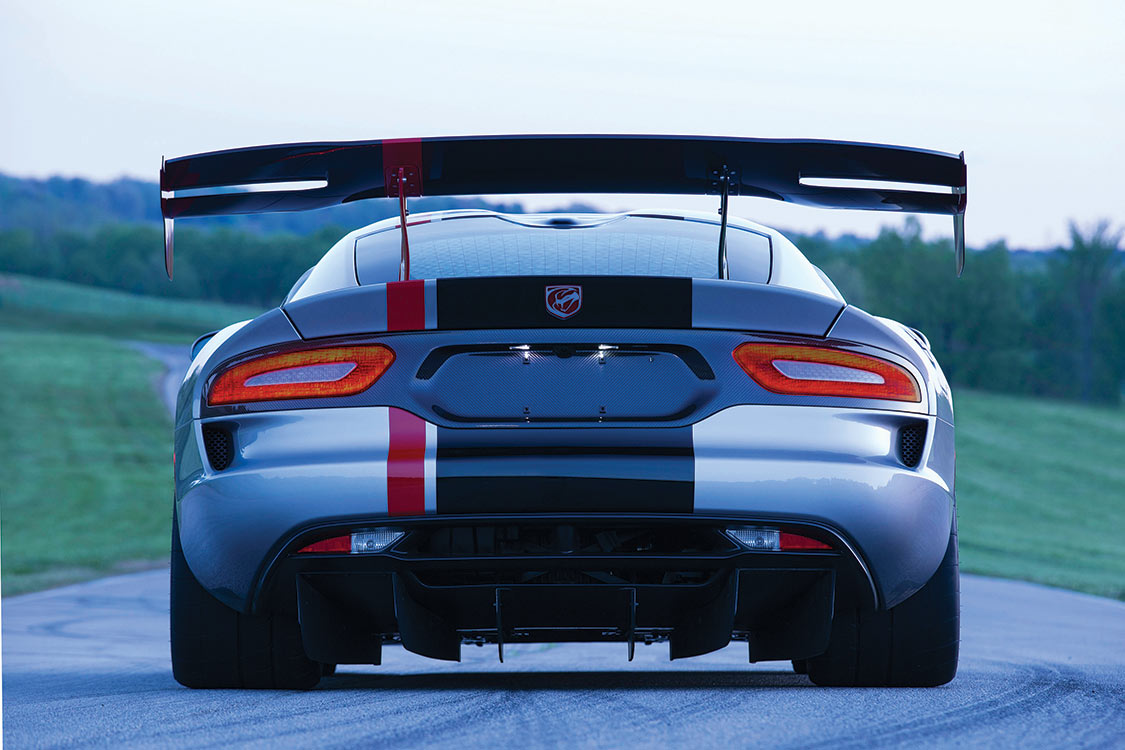
Press the engine start button and the ACR springs to life with an exhaust note that only a large displacement V-10 can replicate. There’s no need to pipe in fake exhaust sounds via the stereo system here. With a cockpit that’s lacking the normal sound deadening of a standard Viper and side exit exhaust pipes, you have an amazing soundtrack sans the artificial acoustics.
The Viper ACR produces the most torque of any naturally aspirated production engine and a quick blast through the gears reminded us of the old adage that there’s no replacement for displacement. Acceleration was breathtaking in any gear and power was delivered in a linear and unrelenting fashion. With the recent trend toward turbocharging, we should all cherish what may be the last generation of unboosted engines.
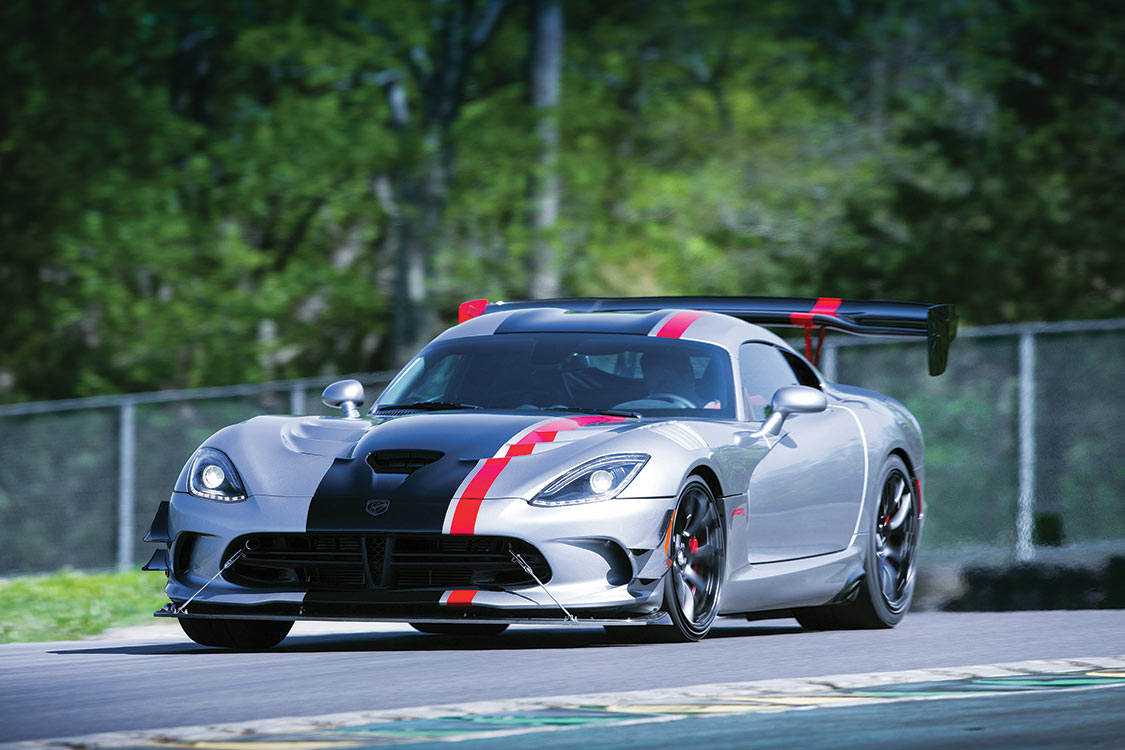
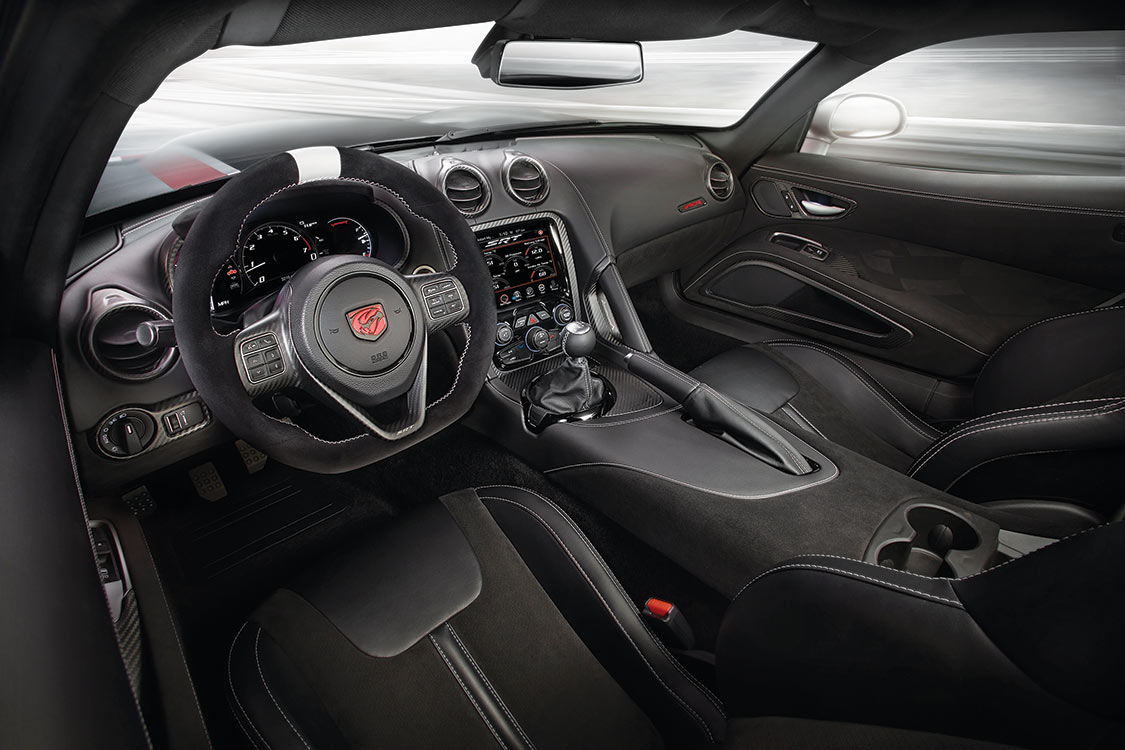
Despite lacking many of the electronic nannies that turn the driving experience of some exotics into a video game, the Viper ACR has so much grip that you really have to do your worst to get it out of shape. The genius of this car is that how it handles is within your control. Make some aero adjustments, change the shock settings, tweak the alignment and you can dramatically change the behavior of this car.
With a base price of $122,490, the ’16 Dodge Viper ACR may just be the most race car you can buy for the money. Plus it’s street legal, so just think of the money you’ll save on a tow vehicle and trailer. If you’re serious about driving at the track and want something that will really turn heads on the street, the ’16 Dodge Viper ACR is your ticket; all for less than the cost of a Porsche 911 Turbo and at least half the cost of anything with a prancing horse or charging bull emblem on the nose.